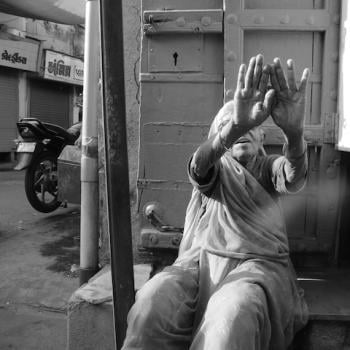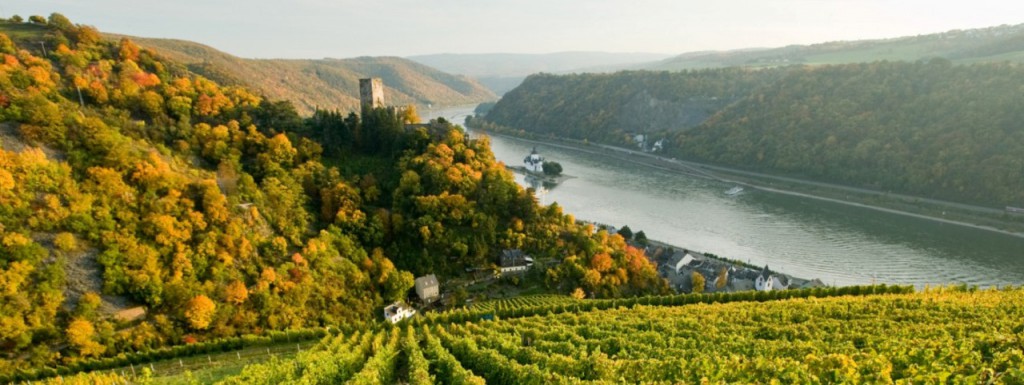
Today’s post begins with a literary mea culpa. I’ve written a number of travel articles in the past about the upper Mississippi River, which is not far from my home in Iowa. Almost all of them have included some variation of: “This part of the Mississippi is as beautiful as the Rhine River in Germany,” a region to which it’s often compared. I hereby confess the error of my ways. While the upper Mississippi is lovely, after having cruised the Rhine this past November I realize I could be convicted of journalistic malpractice.
For one thing, the Rhine has castles. Lots of them. And is there anything that can liven up a landscape like a castle? (Note to the Minnesota and Wisconsin Tourism Offices: invest in some medieval fortresses.) But there’s also the broad expanse of the river itself, bordered by high bluffs and slate cliffs, with steeply terraced vineyards clinging to the nearly vertical slopes and charming German villages on the narrow river banks. It’s all quite marvelously picturesque, causing Bob and me to dash from one side of the cruise boat to the other while snapping pictures.
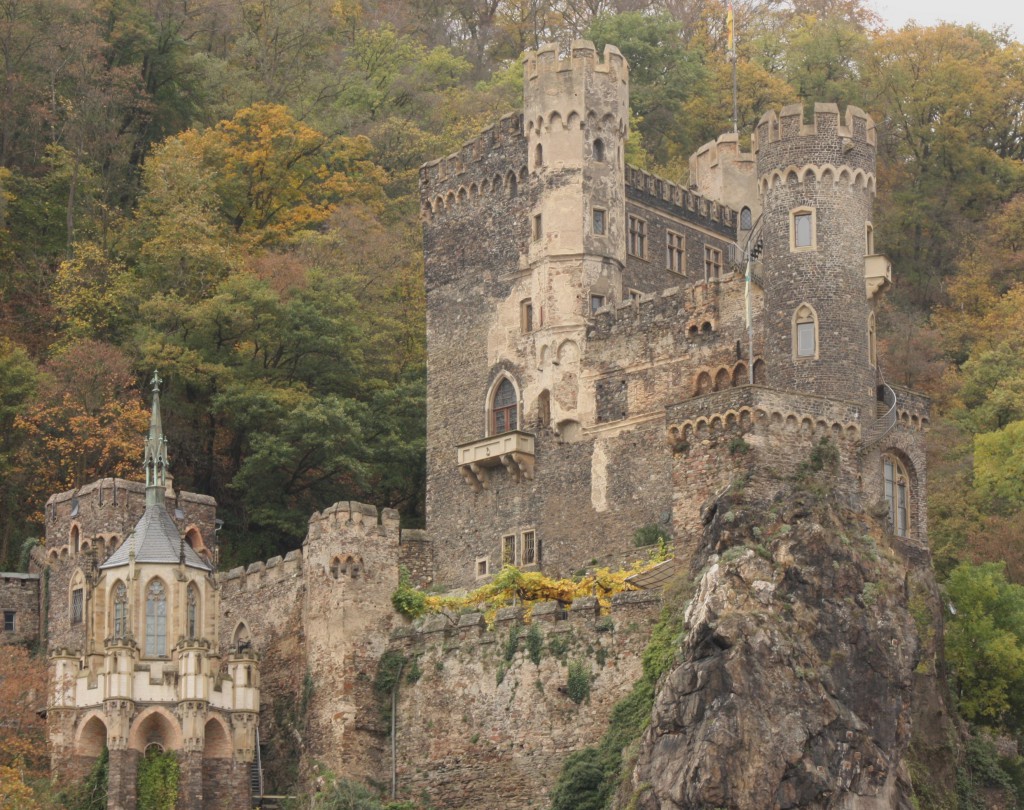
Bob and I had flown into Dusseldorf (thank you, American Airlines, for assisting me through your media program) and then traveled south by train to the start of our cruise. Our final destination was Bingen, home to the 12th-century mystic and abbess St. Hildegard (more about her in later posts).
But while I was eager to get to Hildegard’s home, along the way I fell in love with the Romantic Rhine region. The 65-km stretch between Koblenz and Bingen is a UNESCO World Heritage Site, honored both for its natural beauties and historical significance. In addition to our boat cruise, we stayed overnight in the picture-perfect village of Kamp-Bornhofen, hiked along the Rheinsteig (a trail that traverses the bluffs along the eastern side of the Rhine), and saw the Lorelei Rock, where legend says a bewitching siren tries to lure sailors to their doom.
Given my interests, you won’t find it surprising that I was also happy to visit two pilgrimage sites on the Rhine. I want to tell you about them in part because they illustrate two types of pilgrim journeys. Sometimes it’s good to make plans in advance for one’s arrival at a holy site, and sometimes there’s value in showing up unexpectedly. Both are perfectly fine ways to be a pilgrim, but they have somewhat different gifts to offer.
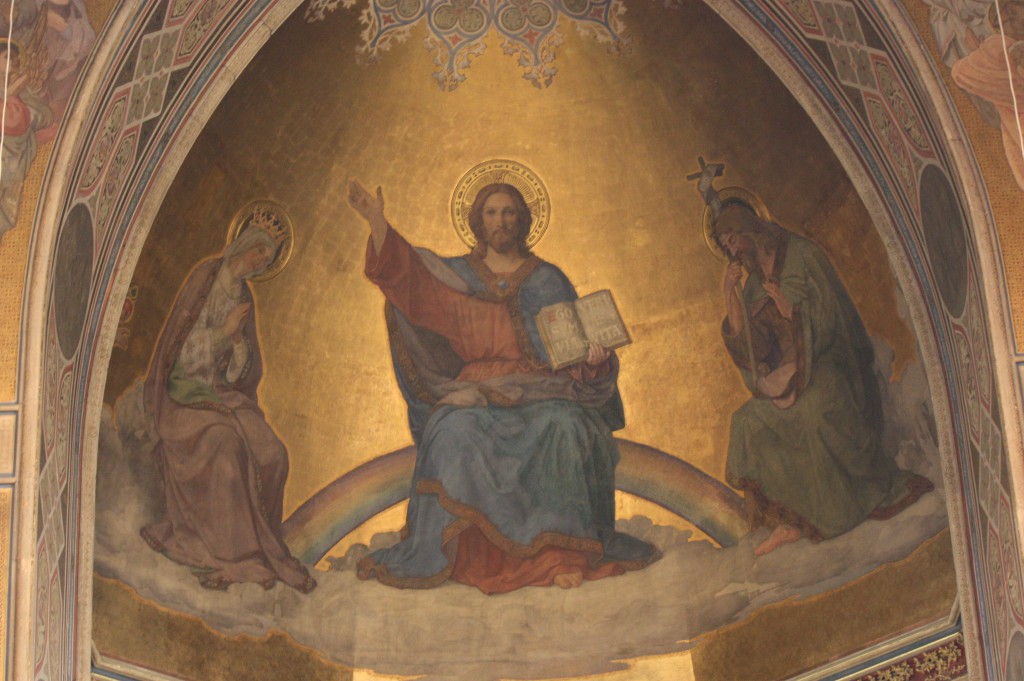
Our first visit was to St. Apollinaris Church in the town of Remagen. The sanctuary is famous for having a relic from St. Apollinaris, a second-century bishop who was one of Christianity’s first martyrs. In Roman times this spot overlooking the Rhine was the site of a temple to Jupiter. I could see why people would want to construct an altar here, for its setting on a high promontory is spectacular, with a panoramic view of the Rhine River and surrounding bluffs.
While a church has stood on this site since at least the ninth century, the current building was constructed between 1839-43 in neo-Gothic style and is filled with richly colored frescoes illustrating the lives of Jesus, Mary and St. Apollinaris. Downstairs, a crypt contains a 14th-century stone sarcophagus that holds the head of St. Apollinaris. Twice a year the head, which is encased in a silver reliquary, is taken out and used to bless pilgrims (it’s said to be particularly good for people with head-related health issues).
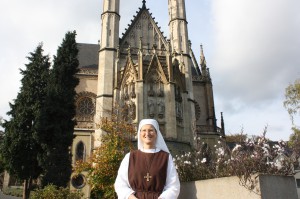
Our tour was conducted by Sister Catharina, a Dutch nun who belongs to a religious order known as the Community of the Crucified and Risen Love. She was a gracious and kind host, pointing out details in the church’s murals, taking us down into the crypt, and showing us the views from the terrace overlooking the river. As she spoke I was struck by the international character of the site. There we were in Germany, talking to a Dutch nun, in a church that holds the remains of a Roman-era saint and attracts pilgrims from around the world.
I also loved her story of the wandering relics of St. Apollinaris, whose skull went from here to there and back again before finally resting in peace in the sarcophagus (for the whole story see St. Apollinaris Church in Remagen). He’s certainly among the more well-traveled of all the saints I’ve encountered.
The next day we toured another sacred site along the Rhine, the Franciscan Abbey of Bornhofen in Kamp-Bornhofen. In contrast to our visit to St. Apollinaris, here I hadn’t let anyone know in advance that we were coming—which I realized might have been a mistake when we entered the church to find it empty and all of its informational brochures in German. Because I knew this is an important pilgrimage site, however, I was determined to find out more. Exiting the church, I knocked on an adjacent building and, when I got no answer, stepped inside. In the antechamber I found a doorbell that I pressed, and then for good measure pressed again (when the Holy Rover wants information, get out of her way).
And then a monk in a brown robe appeared from behind an inner door. While I knew rationally that he hadn’t suddenly appeared from the Middle Ages, he looked as if he might have. I tried to explain to him why we were there, but he spoke little English and my German is exceedingly rusty. But finally we learned that he is a Polish monk who is part of a Franciscan community at the abbey and that he could show us around.
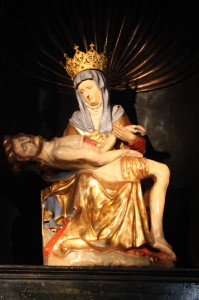
Despite the language difficulties, over the next hour we had a delightful visit with Father Kalikst. He told us that the church was founded in the 13th century and that its statue of the Virgin Mary cradling Jesus is said to be miraculous and attracts many pilgrims (which explains the many “Maria hat geholfen!” plaques in the back of the church). We saw the famous statue, and then toured the pilgrim hall big enough to hold hundreds of people. Between my fractured German and Father Kalikst’s limited English, a lot of the details escaped me, but the most important communication was nonverbal. Father Kalikst welcomed us, strangers from a strange land, fulfilling the most fundamental of all monastic commandments: to greet everyone who comes to the door as Christ.
As we parted, there was much enthusiastic shaking of hands. We asked him if he would give us a blessing. “My English is no good,” he protested.
“It doesn’t matter,” I said. “Give us a blessing in Polish.”
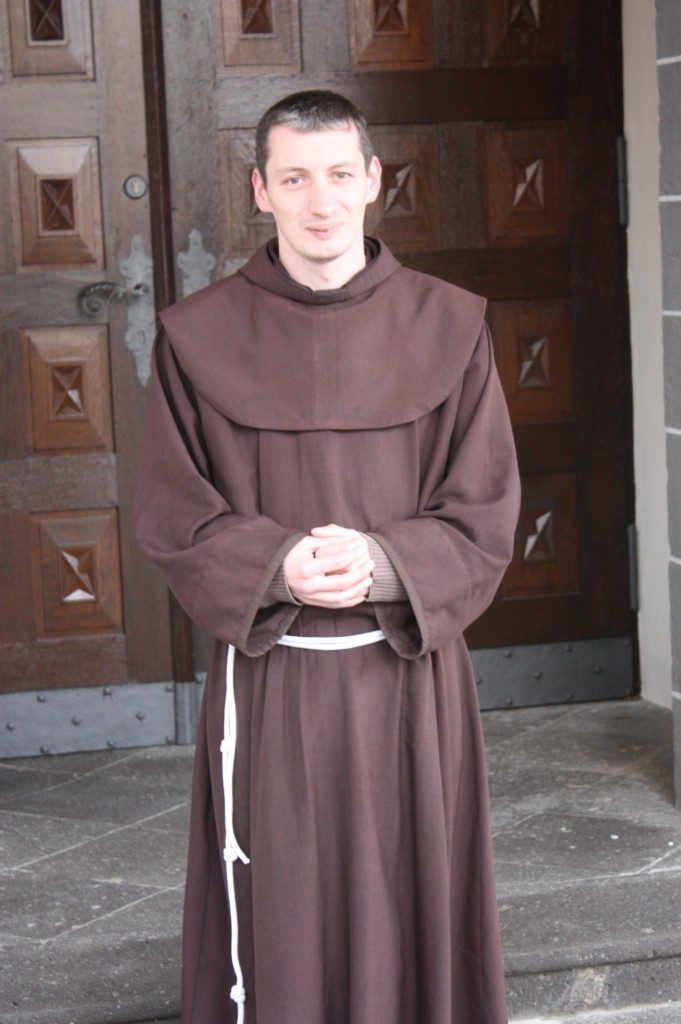
So there we stood on the steps of the church that has a miraculous statue of Mary that I still don’t know much about, and Father Kalikst put his hands on our heads and said a bunch of words that I didn’t understand. But it didn’t matter, because you don’t need to know the exact words of a blessing to feel its power. At the end he smiled and said in his Polish-accented English, “Go in peace.”
Which we did, grateful for the hospitality of monks and nuns who welcome strangers dropping into their lives from places far away, and thankful as well for how much can be communicated without words.



